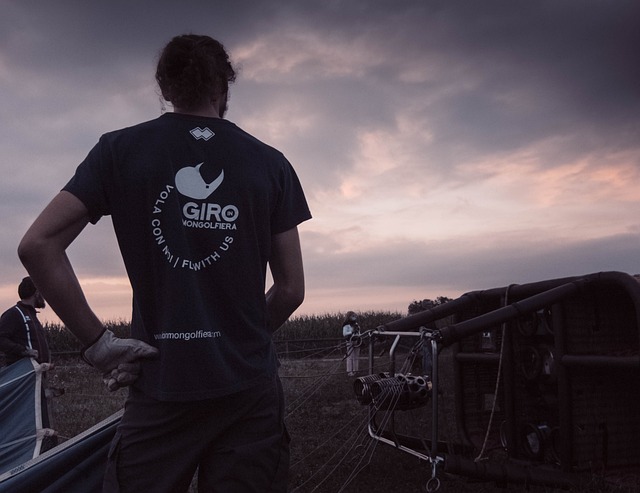Crafting Custom Journeys: A Travel Agency’s Guide to Personalized Adventures
In today’s fast-paced world, people are seeking more than just a vacation; they yearn for unique experiences that resonate with their values, interests, and dreams. As a travel agency, the challenge lies in the ability to create tailored adventures that speak to the heart of each traveler. This guide delves into the intricacies of crafting custom journeys, offering insights and strategies to help you foster unforgettable travel experiences for your clients.
Understanding the Importance of Personalization
Personalization in travel planning enhances the overall experience, transforming a standard vacation into a meaningful journey. This need stems from a variety of factors:
- Diverse Traveler Profiles: Whether it’s a solo wanderer, a couple celebrating an anniversary, or a family with young children, each traveler brings unique preferences and requirements.
- Experiential Demand: Modern travelers prioritize experiences over material possessions. They seek engagements that enrich their lives, connect them with local cultures, and create lasting memories.
- Technology in Travel: With an abundance of travel information available at their fingertips, travelers are informed and expect travel agencies to elevate their skills in crafting customized itineraries.
Steps to Crafting Personalized Adventures
1. Initial Consultation
Start the journey with a detailed consultation. A thorough understanding of your client’s aspirations will serve as the foundation for personalization. Consider the following aspects during your discussions:
- Interests and Hobbies: Discover what excites your clients—adventure sports, culinary experiences, historical explorations, or wellness retreats.
- Travel Style: Understand whether they prefer luxury accommodations, a budget-friendly approach, or boutique experiences.
- Duration and Flexibility: Gauge how much time they have and their willingness to adapt their itinerary for spontaneity or exploration.
- Preferred Destinations: Identify locations that have a special appeal. Consider not only popular hotspots but also hidden gems that align with their interests.
2. Research and Planning
Once you have gathered insights from the initial consultation, dive into research. This step involves a deep dive into the destinations that align with your client’s preferences:
- Culture and Tradition: Explore the cultural background of the destination. This understanding can help in suggesting local experiences that resonate with travelers.
- Accommodation Options: Curate a list of accommodations that match their travel style—from opulent hotels to charming boutique lodgings or vacation rentals.
- Food and Dining Experiences: Restaurant reservations can elevate a trip. Research culinary hotspots, local eateries, and food festivals that would appeal to your clients’ tastes.
- Activities and Excursions: Tailor activities that align with their interests. Whether it’s a guided city tour, hiking in nature, or immersive workshops, offer a blend of relaxation and adventure.
3. Building Itineraries
Designing a compelling itinerary is crucial in presenting your custom journey. A well-structured itinerary should include:
- Detailed Day-by-Day Breakdown: Outline daily activities, travel times, and breaks to strike a balance between exploration and relaxation.
- Local Experiences: Incorporate authentic activities that allow travelers to engage with locals, such as cooking classes, artisan workshops, or volunteer opportunities.
- Flexibility: Allow room for last-minute changes to the itinerary, accommodating a spontaneous visit to a local market or a sunset view.
Utilizing Technology for Personalization
Leveraging technology amplifies your ability to craft personalized travel experiences. Travel agencies can utilize several tools and platforms to enhance service delivery:
- Customer Relationship Management (CRM) Systems: These tools can help keep track of client interactions, preferences, past trips, and feedback, all leading to more tailored future experiences.
- Mobile Apps: Offering clients a mobile app with their itinerary, destination information, and emergency contacts can enhance their travel experience while providing them peace of mind.
- Social Media Insights: Monitoring clients’ social media can offer clues into their interests, likes, and experiences they value—helpful information for future trips.
Building Relationships with Vendors
Establishing strong relationships with local vendors and service providers can greatly enhance the personalization of a trip. Here’s how:
- Local Insights: Vendors can provide valuable insights into local cultures, hidden gems, and tailored experiences that aren’t available in travel guides.
- Exclusive Offers: Collaborate with hotels, restaurants, and tour operators to secure exclusive deals or private tours for your clients.
- Trust and Reliability: Trusted vendors ensure smooth operations, allowing you to manage your clients’ trips more efficiently, minimizing potential issues.
Feedback and Continuous Improvement
Soliciting feedback from clients post-trip is vital for continuous improvement. Consider the following ways to gather insights:
- Surveys: Send out surveys that ask pertinent questions about their overall experience, specific activities, and accommodations.
- One-on-One Discussions: Encourage a follow-up call to discuss their experiences in-depth, creating a more personal connection.
- Online Reviews: Encourage clients to leave reviews or testimonials, which can help in attracting new customers and refining your services.
Case Studies of Successful Custom Journeys
Adventure Travel in New Zealand
For a couple seeking adventure and stunning landscapes, a custom itinerary was crafted, including activities such as bungee jumping in Queenstown, a scenic road trip through the South Island, and a relaxing day at the hot springs in Rotorua. Personalized touches included a surprise romantic dinner at a local vineyard, ensuring the trip celebrated their love and love for adventure.
Cultural Immersion in Japan
A family of four desired a blend of traditional and modern experiences in Japan. The itinerary highlighted visits to ancient temples, participation in a tea ceremony, and time spent in bustling Tokyo, including guided tours tailored to their children’s interests. The family returned with wonderful memories, including a cooking class that allowed them to bond over their love for sushi.
Conclusion
In a world where travelers are on the lookout for experiences that are extraordinary and meaningful, crafting custom journeys is not simply a service—it’s an art. By understanding your clients, utilizing technology and collaboration with local vendors, and seeking continuous improvement through feedback, travel agencies can curate unforgettable adventures that resonate with each traveler’s unique story. As travel continues to evolve, the agencies that excel in personalization will pave the way for memorable experiences, drawing joy, excitement, and connection from all who choose to embark on these journeys.
Embrace the opportunity to shape not just vacations, but life-changing adventures. Equip your agency with the skills and insights from this guide, and watch as your travelers create stories that they will cherish forever.


